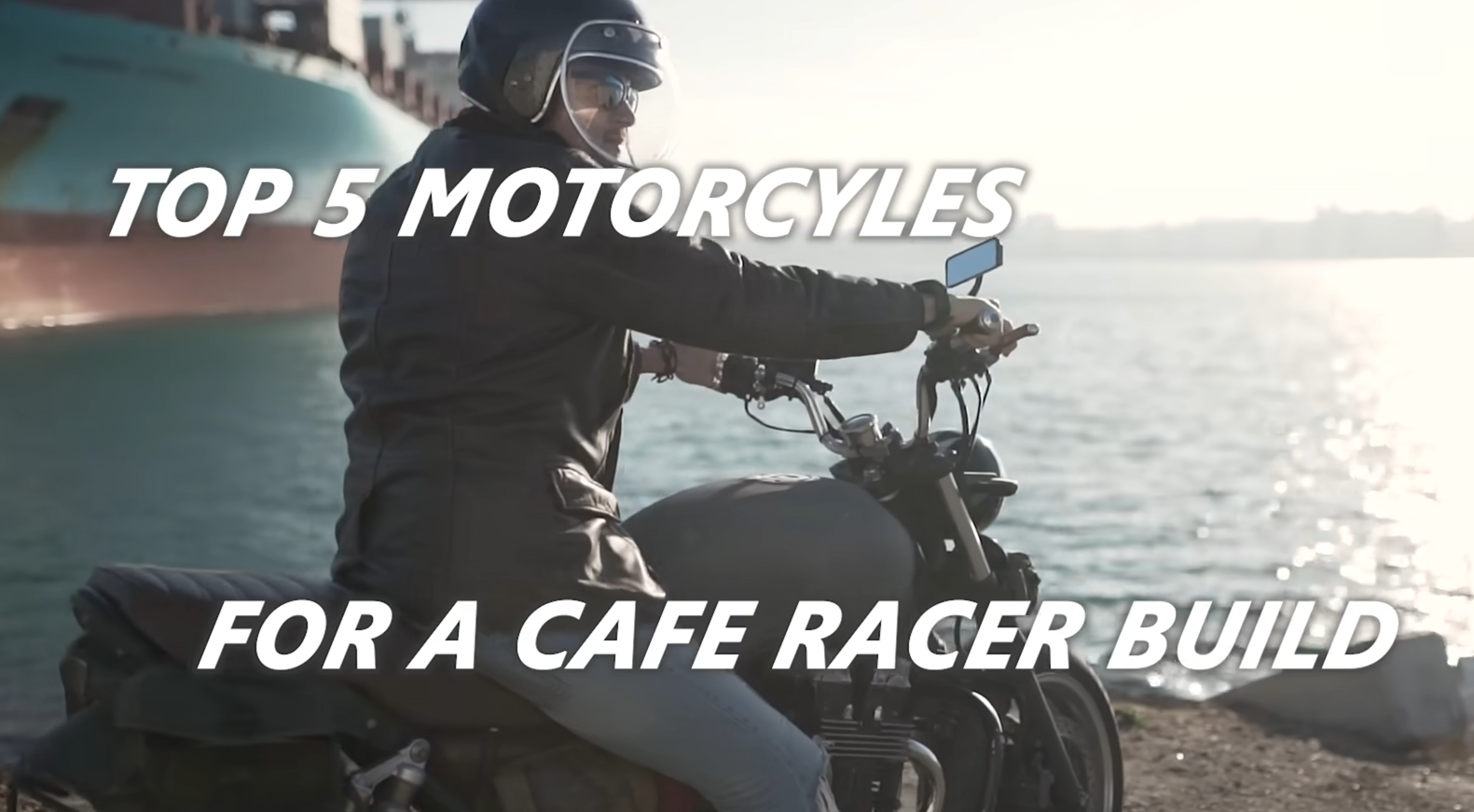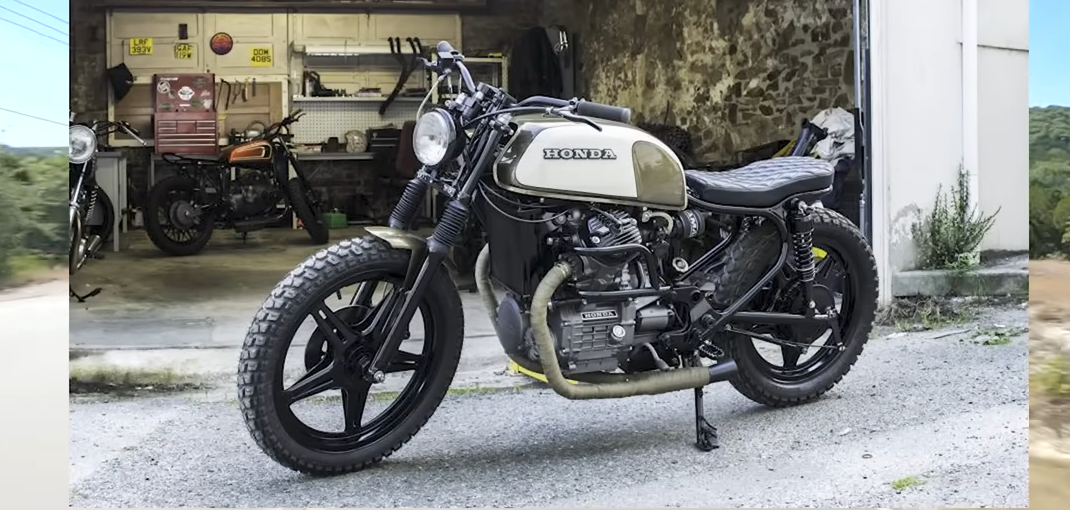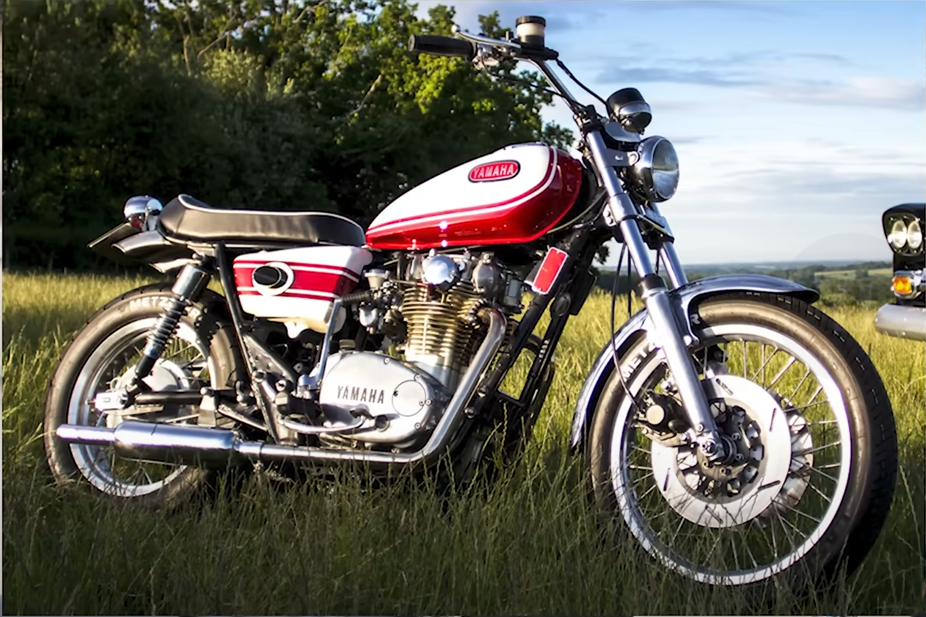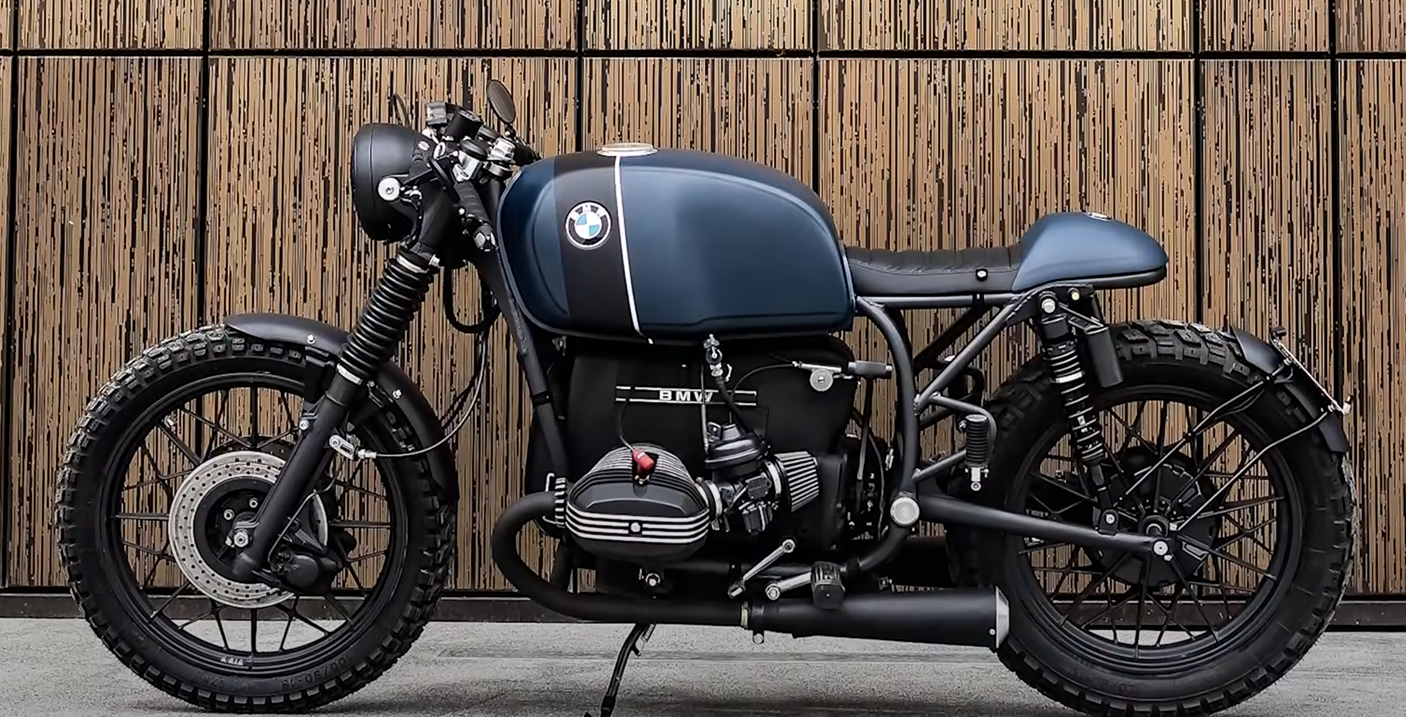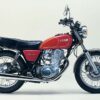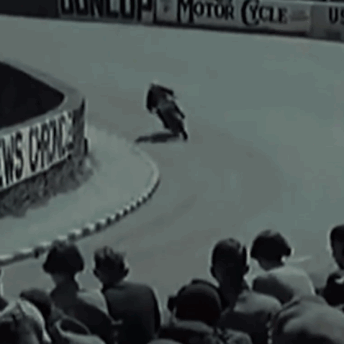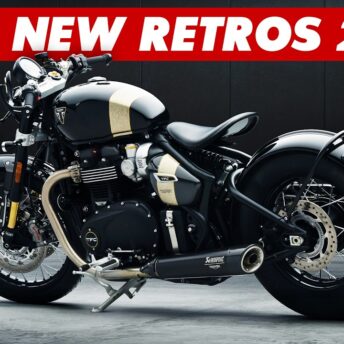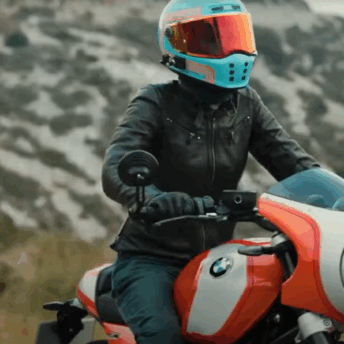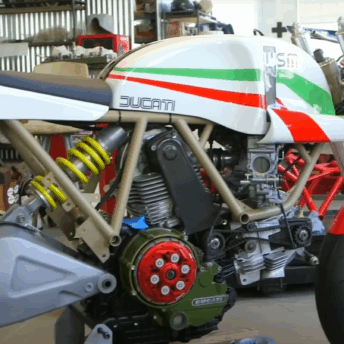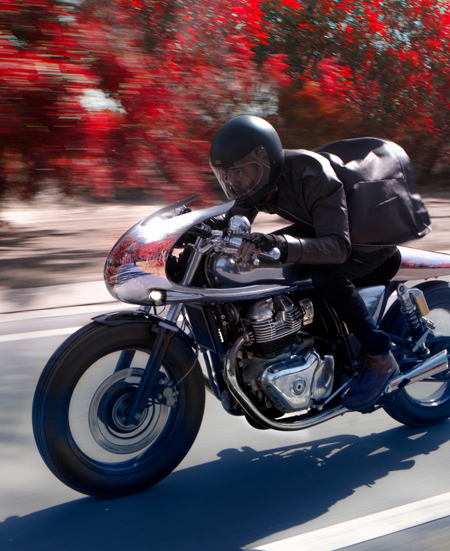Building a café racer takes patience, skill, and a willingness to get hands-on with a motorcycle. Riders often choose older models as their starting point, stripping away unnecessary parts and making changes that improve both performance and style. This process not only creates a bike that feels personal but also connects to a tradition that began decades ago when motorcyclists first started modifying their machines for speed and handling.
Today, the café racer style remains popular because it blends classic looks with modern customization. From choosing the right motorcycle to making upgrades in suspension, brakes, and design, each step requires careful planning. While some builds stay simple and budget-friendly, others become detailed projects with extensive modifications. Either way, the end goal is a motorcycle that reflects the rider’s vision while staying true to the café racer spirit.
Key Takeaways
- Riders value café racers for their mix of history, style, and performance
- Choosing the right motorcycle platform makes the build easier and more rewarding
- Successful builds balance creativity with practical upgrades and solutions
History of Cafe Racer Motorcycles
Beginnings in 1950s London
Cafe racers first appeared in London during the 1950s. Young riders stripped down their motorcycles to make them lighter and faster, often tuning engines for more power and fitting low handlebars with rear-set foot pegs. The goal was simple: ride quickly between cafes while enjoying the new rock and roll culture.
Development of the Look
The style spread beyond British brands like Triumph and Norton to include Japanese and European motorcycles such as Honda and BMW. By the late 1960s and 1970s, models like the Honda CB750 and Yamaha XS650 became popular choices for custom builds. Riders valued these bikes for their performance, aftermarket parts, and versatility in customization.
Defining Traits of the Bikes
Cafe racers share a few common design elements:
- Clean lines with a balanced frame geometry
- Seat height that aligns with the top of the front triple tree
- Minimalist lighting, often with turn signals removed or built into the tail light
- Removed rear fenders replaced with a welded frame hoop
These motorcycles usually receive upgrades in suspension, brakes, and tires to match engine improvements. Builders range from budget projects with basic parts to high-end custom machines with extensive modifications.
| Common Models | Engine Type | Years Produced | Notes |
|---|---|---|---|
| Honda CB750 | 736cc inline-four | 1969–2003 | Considered the first “superbike,” strong aftermarket support |
| Yamaha XS650 | 654cc parallel twin | 1970–1983 | Easier to tune, classic styling, popular for custom builds |
Picking the Best Base Bike
Key Things to Look At
When starting a cafe racer project, the choice of motorcycle matters. Some bikes are easier to work on, while others can become a headache. A good starting point is a bike that is mostly stock and has not been heavily modified. This makes diagnosing issues and sourcing parts much simpler.
Checklist for a solid platform:
- Mostly stock condition
- Reliable engine design
- Manageable carburetor setup
- Reasonable purchase price
Parts and Upgrade Availability
Aftermarket support plays a big role in how smooth the build process goes. Popular models like the Honda CB750 or Yamaha XS650 have large communities and plenty of parts available. This means riders can find bolt-on upgrades for suspension, brakes, and exhaust systems without relying on questionable universal-fit parts.
| Model | Engine | Ease of Tuning | Aftermarket Support |
|---|---|---|---|
| Honda CB750 | 736cc Inline-Four | Harder (4 carbs) | Very strong |
| Yamaha XS650 | 654cc Parallel Twin | Easier (2 carbs) | Strong |
Style and Visual Fit
Looks matter with a cafe racer. Some bikes naturally fit the clean lines and low stance of the style better than others. The Honda CB750, especially the early K-series, already has proportions that suit the cafe racer shape. The Yamaha XS650 also carries a classic look that works well with minimal changes.
Common styling choices:
- Removing or shortening rear fenders
- Adding a frame hoop under the seat
- Low handlebars and rear-set pegs
- Integrated or hidden lighting
Both performance and appearance should guide the choice, but the right bike will balance ease of building with the look and feel of a proper cafe racer.
Best Motorcycles for Cafe Racer Projects
Honda CB750
The Honda CB750, first released in 1969, is often seen as the foundation of modern superbikes. Its air-cooled 736cc inline-four engine produces around 67 horsepower and 44 lb-ft of torque in stock form. Builders often upgrade suspension, brakes, and tires to match performance improvements from exhaust and intake modifications.
The K-series models (1970–1976) are the most popular for cafe racer builds because of their classic look and easier parts compatibility. A strong aftermarket exists, making it simple to find purpose-built components instead of relying on universal parts. The main drawbacks are its higher market price and the challenge of tuning its four carburetors.
| Spec | Detail |
|---|---|
| Engine | 736cc inline-four |
| Power | ~67 hp |
| Torque | ~44 lb-ft |
| Years to Look For | 1970–1976 K-series |
| Common Issues | Price, carburetor tuning |
Yamaha XS650
Produced from 1970 to 1983, the Yamaha XS650 is another favorite for cafe racer projects. Its 654cc parallel twin makes about 53 horsepower, and with only two carburetors, it is easier to tune than larger inline-fours.
The XS650 has a strong aftermarket and retains the classic UJM styling that suits the cafe racer look. Stock, unmodified examples are the best starting point, as half-finished builds often hide costly problems. While prices have risen due to popularity, well-kept models can still be found with patience.
Key Points:
- 654cc twin engine
- Easier carburetor tuning than a CB750
- Good aftermarket support
- Stock bikes preferred over half-completed projects
Smaller Honda CB Options
For riders who prefer a lighter platform, the Honda CB550 and CB450 are common choices. These models share much of the CB750’s styling but come with smaller displacement engines, making them easier to handle for newer or smaller riders.
They also tend to cost less than a CB750, which can make them a practical entry point into cafe racer building. While they don’t match the outright performance of the larger CB, they still provide the right balance of style, affordability, and customization potential.
Other Well-Known Brands
Although Honda and Yamaha dominate the cafe racer scene, other manufacturers also provide strong bases for projects. Triumph and Norton were among the originals in the 1950s and 1960s, while BMW models later became popular with builders who wanted a different take on the style.
These brands offer alternative aesthetics and engineering approaches, giving riders more options depending on budget, availability, and personal preference.
Key Changes for Cafe Racer Builds
Engine and Power Mods
Builders often start by tuning the motor for better output. Swapping in high-flow exhausts and upgraded air cleaners can boost horsepower and torque. Inline-four models like the CB750 may require careful carburetor adjustments, while twin-cylinder bikes such as the XS650 are simpler to dial in.
| Bike Model | Stock Engine | Common Upgrade | Difficulty |
|---|---|---|---|
| Honda CB750 | 736cc Inline-Four | Exhaust + Jetting | High (4 carbs) |
| Yamaha XS650 | 654cc Parallel Twin | Carb tuning + Intake | Moderate (2 carbs) |
Suspension and Control Tweaks
Improving handling usually means updating tires, brakes, and suspension. Builders often install modern shocks, fork upgrades, and better brake setups to keep up with the added performance. Rear-set foot pegs and low handlebars also create a more aggressive riding stance.
- New tires for grip
- Upgraded brake calipers or pads
- Rear shocks with adjustable preload
- Clip-on or clubman bars for lean-forward posture
Visual and Frame Adjustments
Styling changes focus on clean lines and a minimalist look. Many riders remove rear fenders, weld on a frame hoop, and fit a slim seat that aligns with the tank and triple tree. Turn signals are often integrated into the taillight or removed entirely for a stripped-down appearance.
Common styling choices:
- Slim single-seat with cowl
- Integrated LED lighting
- Shaved-down bodywork
- Polished or powder-coated frame
Frequent Obstacles and Setbacks


Finding Replacement Components
Older motorcycles often require parts that are no longer made. While some models have strong aftermarket support, others leave builders searching through secondhand markets or paying higher prices for rare components. A clear advantage comes from choosing platforms with widely available parts, which helps avoid delays and compatibility issues.
Tips for parts sourcing:
- Look for bikes with long production runs.
- Check if aftermarket companies specialize in that model.
- Avoid relying on “universal fit” parts, which often perform poorly.
Adjusting Carburetors
Multi-carb setups can be difficult to dial in. For example, a four-carb system may require repeated jetting and syncing, which frustrates even experienced mechanics. In contrast, a twin-carb bike is usually simpler to manage and keeps the process more approachable.
Comparison Table:
| Engine Type | Carb Count | Difficulty Level | Notes |
|---|---|---|---|
| Inline-Four | 4 | High | Time-consuming to balance |
| Parallel-Twin | 2 | Moderate | Easier to tune consistently |
Steering Clear of Bad Project Bikes
Buying a half-finished build often leads to hidden problems. These bikes may come with poor wiring, mismatched parts, or unknown engine issues. Starting with a stock and well-kept motorcycle reduces the risk of chasing endless repairs.
Red flags to watch for:
- Missing or hacked-up wiring harness
- Non-stock modifications with no documentation
- Sellers who cannot explain what work has been done
Choosing the right starting point saves time, money, and frustration throughout the build.
Building Your Unique Cafe Racer
Restore or Modify
Builders often face a choice: bring an older motorcycle back to its original condition or reshape it into a custom cafe racer. Restoring keeps the bike close to its factory design, while modifying allows for changes in style, performance, and handling. Some riders prefer the challenge of tuning engines, adjusting suspension, and reshaping bodywork, while others aim for a clean, functional rebuild that blends original parts with subtle upgrades.
Comparison of Approaches
| Approach | Focus | Typical Outcome |
|---|---|---|
| Restoration | Original design and function | Classic look, stock performance |
| Customization | Style, performance, and handling | Unique design, modern upgrades |
Cost Planning
The price of a cafe racer project depends on the bike chosen, the condition it starts in, and the level of detail in the build. A budget build might use secondhand or generic parts, while a high-end project can cost more than a new production motorcycle. Riders should also account for tools, replacement parts, and unexpected repairs like seized bolts or carburetor tuning.
Key Costs to Consider:
- Initial purchase price of the motorcycle
- Replacement or aftermarket parts
- Tools and shop supplies
- Paint, seat, and cosmetic upgrades
Making It Your Own
Personal touches set one build apart from another. Riders often adjust handlebars, seats, and lighting to match their vision. Some prefer a stripped-down look with minimal bodywork, while others integrate modern upgrades like improved brakes or suspension. Choosing a platform with strong aftermarket support, such as a Honda CB or Yamaha XS, makes sourcing parts easier and keeps the project moving forward.
Popular Personalization Ideas:
- Seating: Slim seat pans or custom upholstery
- Lighting: Integrated tail lights or hidden signals
- Controls: Rear-set pegs and low handlebars
- Performance: Upgraded exhaust, carb tuning, or suspension changes
